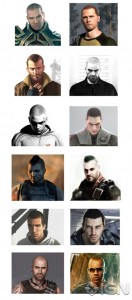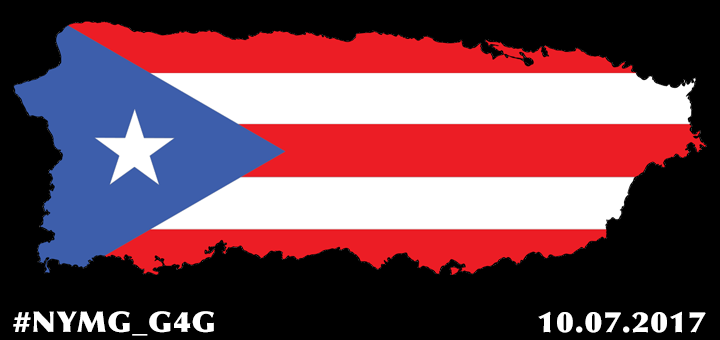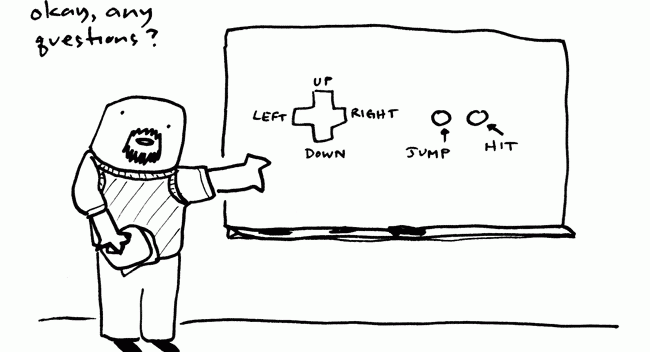The face of game protagonists is looking rather generic. If you were to poll gamers as to what the average playable character looks like, chances are there would be a general consensus among the answers. It’d almost certainly be a white man. He’d likely be in his late twenties or early thirties with a hardened face that suggests he’s been carrying a lot of baggage. Chances are, we could get even more specific than that: he’d have a scruffy beard or a stubble shadow, a chiseled jaw, and brown hair. This is not to say that all protagonists look like this; of course they don’t, and there have certainly been some strong strides in diversity in games, particularly in indies. However, going off my own personal databank, the various scruffy-white-dude collages compiled on the internet like the one above, and the amusing yet rather sad montage Youtube user Rebellious Pixels created from promo footage highlighting the sheer number of similar male protagonists revealed at this year’s E3, it seems like this pervasive trend of what I like to call “same face syndrome” is following the industry into the new generation.
The concept of same face syndrome first entered my mental dictionary after accusations arose on Tumblr that Disney was reusing their CGI female character designs. After promotional pictures were leaked for Disney’s upcoming film Big Hero 6, many users were quick to point out that Honey Lemon’s physical character model looked a lot like Rapunzel . . . and that Rapunzel looks a lot like Anna who looks a lot like Else who looks a lot like their mother . . . and so on. These similarities transcend “art style” and border more on direct copy and paste, as is beautifully explained here. While I, for most cases anyway, I certainly don’t think that developers are taking protagonists and reusing their models in quite the same way Disney seems to here (I would call it “similar traits syndrome” but that’s just not as catchy), I do believe that game design is suffering from a compulsion to create characters that fit in generic boxes of “what a protagonist should look like” and “what characters sell games.” But it’s not just the industry that suffers, it’s the gamers too, and not just in the ways you might think.
It should be pretty apparent as to why this is problematic for female gamers and gamers of color. It denies us the opportunity to play as a character who looks like us and shares a basic, but fundamental and important, life experience and stomps all over the importance of representation. It also insinuates that the kind of adventures these scruffy-white-dudes have are not the kind women or PoC experience or that their stories are more valid or interesting, amongst other things. But we’ve discussed this at length here on NYMG so I’ll try to stick to my topic at hand: how this sort of design is really doing no favors to male players either.
I see attention being drawn to gaming’s version of same face syndrome even amongst communities who speak against what they see as the “forced” or “unnecessary” diversification of video games. When comparing mainstream game protagonists it’s hard not to acknowledge the generic design similarities and be a little annoyed, and with good reason. Although I’m sure there are people in  real life who look just like Nathan Drake or the default male Commander Shepard, the fact of the matter is that most men don’t look like that. As much as some players like to deny its presence, these characters, while generic due to their similarity, are as much a product of a patriarchal system as the objectification of female characters in video games. But instead of being sexualized and reduced to sex objects, these male characters act as manifestations of what our culture labels as a male ideal. They become hyper-masculine examples of what men are pressured into looking and, in many cases, acting as. In these examples gender binaries are often rigidly enforced, both physically and emotionally, which leads to an ideal that erases the presence of men of color, men who don’t conform to gender or sexual binaries, men whose body types don’t match the silhouette of a typical protagonist, and the like. These scruffy-white-dudes offer (white) male players a sort of role/wish fulfillment and the ability to act out male power fantasies, something women and other “nontraditional” gamers are often denied, but their reoccurance across titles also speaks a lot about what heroic/admirable men are “supposed” to be in our culture and what the rigid definition of manhood and male beauty is comprised of.
real life who look just like Nathan Drake or the default male Commander Shepard, the fact of the matter is that most men don’t look like that. As much as some players like to deny its presence, these characters, while generic due to their similarity, are as much a product of a patriarchal system as the objectification of female characters in video games. But instead of being sexualized and reduced to sex objects, these male characters act as manifestations of what our culture labels as a male ideal. They become hyper-masculine examples of what men are pressured into looking and, in many cases, acting as. In these examples gender binaries are often rigidly enforced, both physically and emotionally, which leads to an ideal that erases the presence of men of color, men who don’t conform to gender or sexual binaries, men whose body types don’t match the silhouette of a typical protagonist, and the like. These scruffy-white-dudes offer (white) male players a sort of role/wish fulfillment and the ability to act out male power fantasies, something women and other “nontraditional” gamers are often denied, but their reoccurance across titles also speaks a lot about what heroic/admirable men are “supposed” to be in our culture and what the rigid definition of manhood and male beauty is comprised of.
Of course, given the chance to replace those scruffy-white-dudes with either women and characters of color or white male characters that don’t fall into those tropes, I’d definitely pick the former. And I certainly believe that conversations around representation for “nontraditional” gamers and efforts to increase this diversity should be prioritized. But in the seemingly never-ending argument for diversity in game protagonists it’s good to note that the overwhelming presence of scruffy-white-dudes isn’t really doing any gamer – including white male players – justice.



